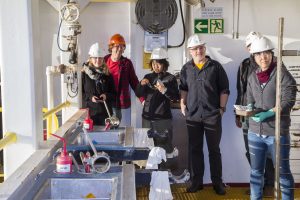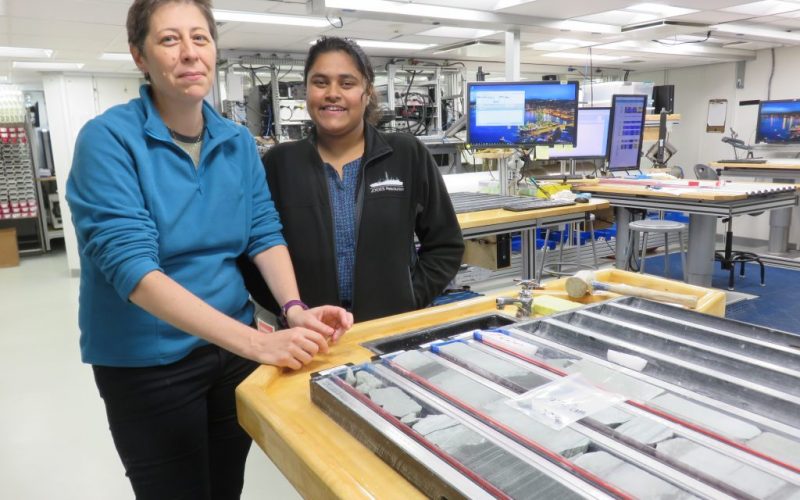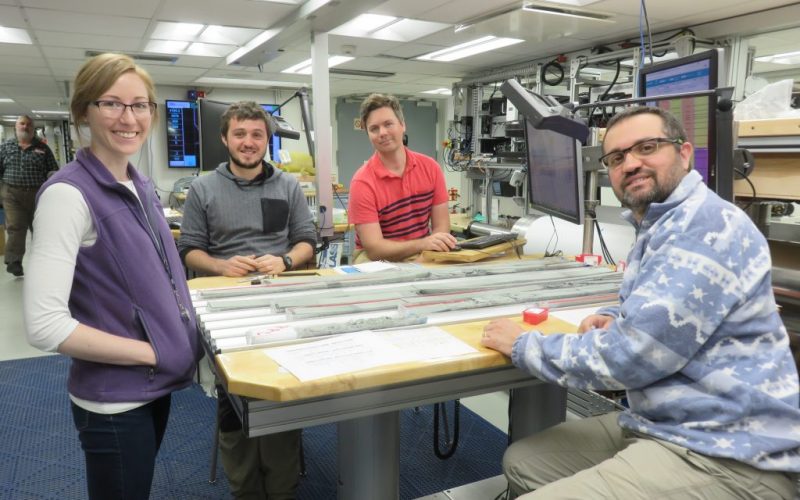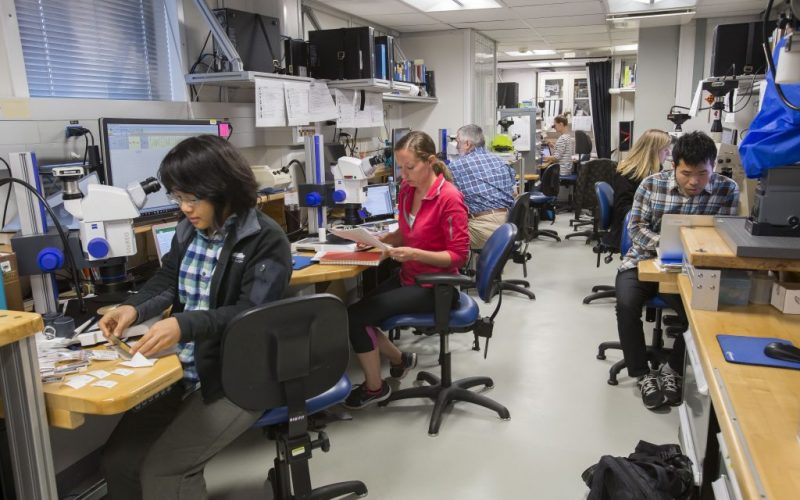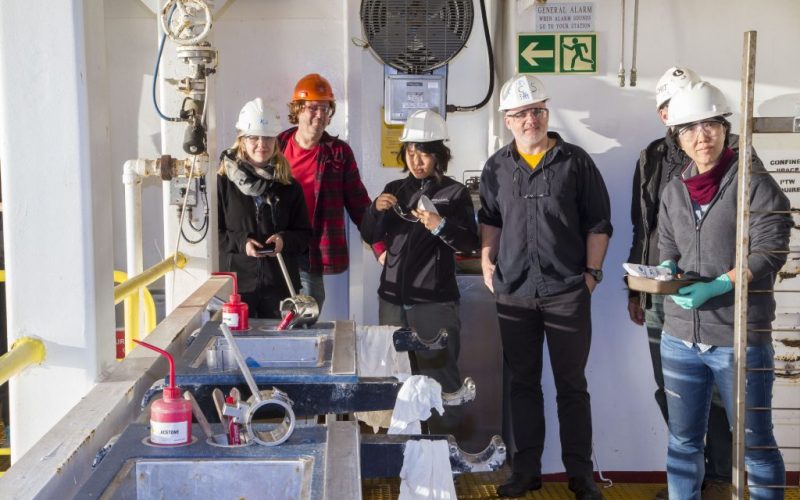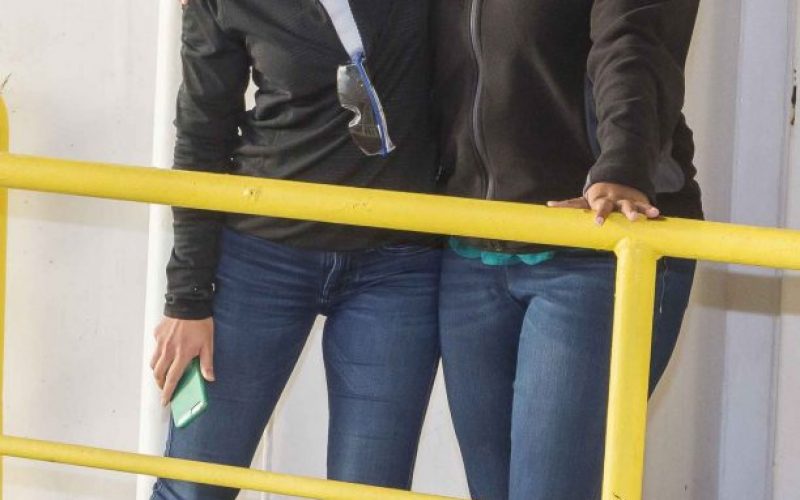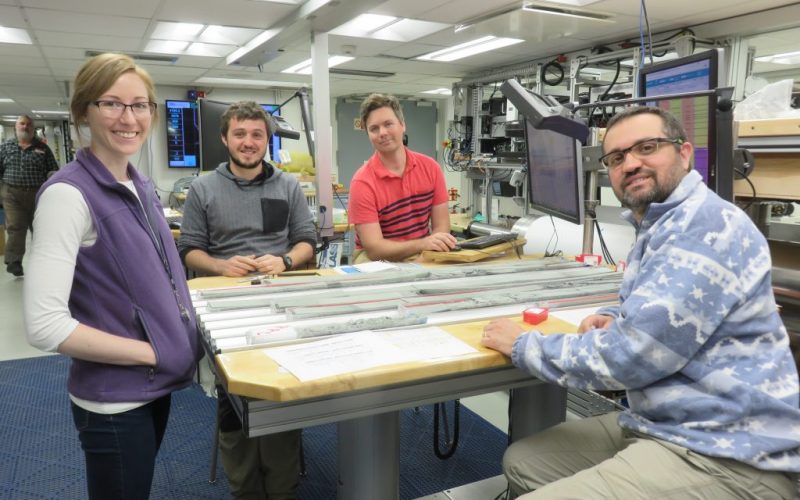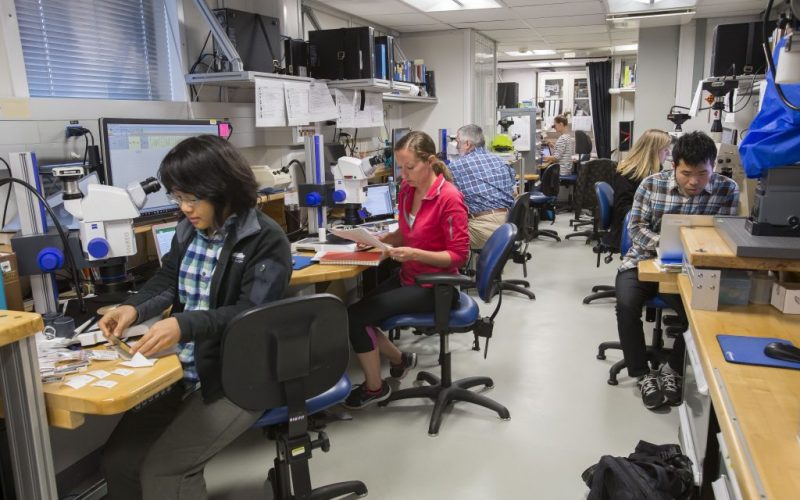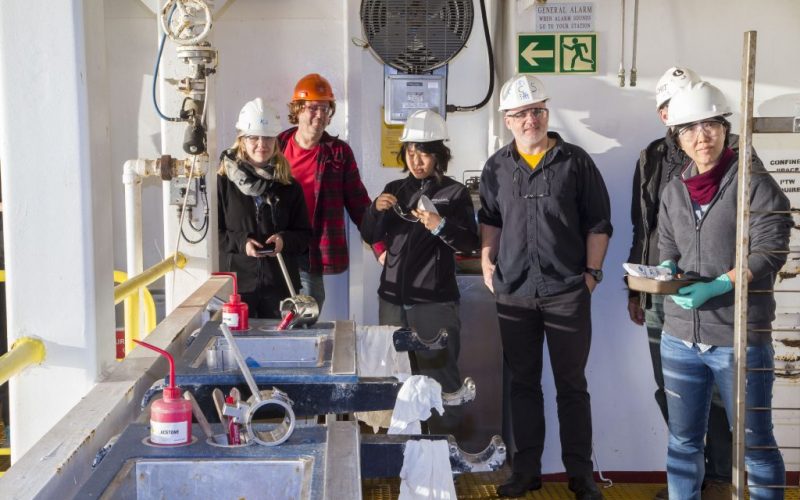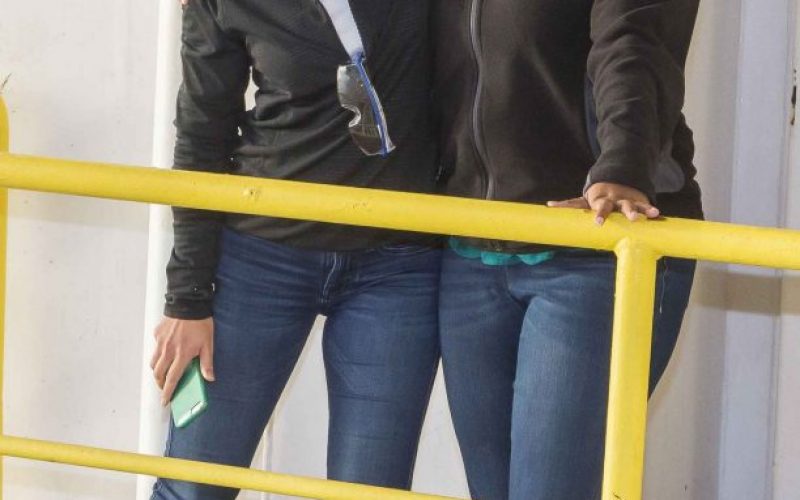“Magic”
The JOIDES Resolution (JR) is an exceptional working place, with a totally unique atmosphere. What is the “magic” ingredient and why so different to the other places I have worked.
The JR has a team of scientific researchers on board from around the world, with 12 different countries represented on this expedition. They have a very unique collegial bond, where they appreciate this very rare opportunity to be able to work together. The expedition has presented them with a totally new challenge, to discover and understand how the continent of Zealandia formed. 50 Million years ago plate tectonics went through a major upheaval, and the pacific rim subduction zone, began to form. This was a very significant geological event and totally changed how the earth was moving.
Plate tectonics has been a concept that has been well known and proven since the 1970’s. It demonstrates that the Earth is still a dynamic and evolving planet. Although the plate tectonics of the Tasman sea, is not well understood, New Zealand, New Caledonia and the surrounding land forms separated from Australia and Antarctica along a mid-oceanic ridge, approximately 80 million years ago and stopped 50 million years ago. New Zealand and New Caledonia were part of the same continental margin, which has now known as the continent of Zealandia, with only New Zealand and New Caledonia currently exposed above sea level and the rest of Zealandia submerged below the ocean. The primary goal of Exp 371 is to understand this event and the climatic changes that occurred during this period. This will bring about a greater understanding of our climate in the future.
As Prof. Rupert Sutherland from Victoria University of Wellington explains:
Everything about the Joides Resolution is extraordinary. The ship’s crew are friendly and look after us well, the science labs have every cool piece of equipment that you could imagine, and the technical staff are very experienced and helpful. We have an amazing team of 32 scientists, so it is like a floating geology department from a university. The IODP program has been in existence for 50 years and is probably the largest science program that has ever existed (even compared to NASA), so it is very well organized. Most of our planet lies beneath the ocean, but there is plenty left to know. We probably know less about our own seabed than the surface of some other planets. However, this is the planet that we live on, so understanding our environment, resources, and hazards is of obvious relevance. This is particularly true as onshore regions fill with humans and we reach natural limits of productivity, environment, etc.
The IODP program, through the knowledge it generates and people it trains, is of fundamental importance to the future of humanity.
